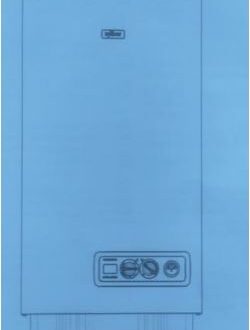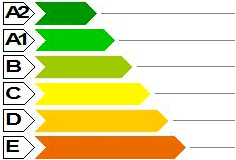Questo post è disponibile anche in: Italian
Here are some tips to save on your gas bill:
SET THE CONDENSING BOILER TO THE CORRECT VALUES.
The boiler is equipped on the body with two controls, one refers to the temperature of the sanitary water with the drawing of a tap and one to the temperature of the radiators with the figure of the radiators.
Setting correctly both the temperature of the domestic hot water used for washing and that for heating the home environment is essential not only for physical well-being but also for saving on bills.
Usually the optimal domestic hot water temperature fluctuates between 45°C. and 55°C. while for the water in the radiators the values range from 60°C to 70°C.
It is good to know that the more the water temperature will be hot ando more limescale there will be damaging the heating system and the taps in the house.
To overcome this problem, if you do not have a water softener, it could be useful to install a polyphosphate dispenser, a small cup with interchangeable powder (polyphosphate) which, when placed near the boiler, prevents the formation of limescale inside.
SHOWER SAVING GAS
A tip to save gas very useful and easy to follow when we shower is to first open the hot water tap of the sink instead of the shower and wait for it to arrive.
When hot water of the tap will come, at the same time you also open the shower, immediately after close the sink tap, you can then take a shower having saved not only an important part of water but, also gas.
This happens because when we open only the shower faucet and maybe we have the boiler away, it will take a few minutes before the hot water arrives so you will have a waste of water given also by the fact that usually the shower faucet contemplates more pipes compared to a sink.
ADJUST THE TEMPERATURE TO THAT OUTSIDE
Usually in winter the ideal temperature in the house is between 19-18 degrees, it is exaggerated to set a higher temperature also because breathing too dry air in the house is not good for health.
It will only be necessary to wear a few more shirts, obviously this argument cannot be applied in environments where live elderly, sick and frail people.
A good solution to save on the bill is to leave the heating on at a temperature of about 18°C. during the coldest hours of the day when we stay at home and to low it to 16-15°C when we go to sleep and when we are away from home.
It is important not to low the temperature too much in the house especially when it is very cold outside, the ideal is not to go below 15 °C. as the gas pipes could freeze and risk breaking.
ASSEMBLE THERMOSTATIC VALVES IN EVERY ROOM AND RADIATOR
Thermostatic valves, as the word suggests, offer the possibility of controlling the inflow of hot water and its temperature in the radiators when the heating is in operation.
This gives the opportunity to enjoy a saving of 40%, so to decide which part of the house to heat more than another depending on the use we make of it.
Each valve has a numbering printed on it ranging from 0 to 5 which indicates the water temperature which will increase as the numbering progresses, moreover it is also possible to set intermediate temperatures, for example if you set the valve between 2 and 3 degrees will be about 18°C.
An important thing to say is that the valve heads are very sensitive to the external temperature and therefore it is good that near their installation do not arrive cold air currents causing useless switching on of the heating.
Here are the temperatures corresponding to the numbering of the thermostatic valve:
The asterisk sign = Temperature set when the room temperature drops below 5°C and prevents the radiator from freezing.
0= The radiator remains off excluding the entrance of the hot water.
1= Temperature around 12°C
2= Temperature about 16 ºC
3= Temperature about 20 ºC
4= Temperature about 24 ºC
5= Temperature about 28 ºC.
WHAT TEMPERATURE TO SET THERMOSTATIC VALVES IN EACH ROOM
For example in the bedrooms or in the bathroom or in those rooms that are not used much during the day when the heating is on, thermostatic valves can help us not to waste energy and not to waste it unnecessarily by regulating the temperature of the valve itself at a intermediate value for example between 2 and 3.
- Living room: about 20 hectares C (level 3)
- Kitchen: about 18 C (level 2.5, between 2 and 3)
- Bathroom: approx. 22 ºC to 24 ºC (level 3.5/4)
- Bedroom: about 18# C (level 2.5)
A good habit in summer the heads fully open to 5, this will prevent the formation of limescale.
CLOSING RADIATOR VALVES IN ROOMS WE DO NOT USE
To avoid unnecessary consumption it is a good idea to close the radiator valves (just turn the knob) in those rooms that we never use to prevent the hot water from heating the radiators unnecessarily and another important thing is to close the door to avoid the passage of cold air into the other rooms.
CHECK THAT THE RADIATORS WARM UP WELL
It happens especially when the heating is started that the radiators do not heat up uniformly, this may be due to the presence of air inside them which does not allow the hot water to enter and circulate.
For this reason it is advisable to remove the air by venting the small valves, precisely called vent valves, located on the upper part of the radiator.
A very simple operation, just take a basin, place it under the valve and press it until water arrives.
After doing this, go and check the water level on the boiler panel, if it has dropped below 1.5 atmospheres, just open the water tap located inside the boiler for a few seconds and wait for it to return to the level. normal, then close.
AVOID TURNING THE HEATING ON AND OFF SEVERAL TIMES IN THE HOUSE
Turning on and off the boiler often during the day leads to an important consumption of energy, useful is the assembly in the house of a chronothermostat to program the temperature in certain hours of the day.
FIT THE CHRONOTHERMOSTAT INSTEAD OF THE THERMOSTAT AT HOME
The chronothermostat is an electronic device that allows us to monitor the temperature we have at home and to set it according to our needs by choosing to switch the heating off and on automatically at certain times of the day.
The thermostat, on the other hand, is a purely manual device which is not capable of detecting the real temperature in the house and whose values must be set manually each time.
LEAVE THE RADIATORS FREE FROM OBJECTS
A custom that often happens in our homes is to put wet clothes to dry on the radiators to save time, there’s nothing more wrong, the heat can’t spread in the room causing humidity on the walls.
Another important thing to avoid is to cover the radiators with a piece of furniture or other objects, preventing the free circulation of hot air in the room.
USE REFLECTIVE PANELS BEHIND RADIATORS
Not everyone knows that part of the heat from radiators is naturally dispersed on the wall to which they are mounted, but to avoid this, panels called “reflections” have been on the market for several years, similar to the sunshades used in the summer to cool the cars behind to the radiators reflect the heat back to the room.
SEALING DOORS AND WINDOWS AGAINST DRAUGHTS AND AIR LEAKS
On the market there are materials capable of insulating windows, doors and windows from draughts, such as the installation of adhesive rubber fenders for example or the use of stuffed snakes to cover the low cracks of the doors.
TURN OFF THE GAS TAP WHEN YOU GO ON HOLIDAY
Good rule of thumb is to turn off the gas faucet of the house when we go on vacation or we have to leave for a medium-long period.
LET THE SUNLIGHT INTO THE HOME DURING THE DAY
When, in winter, the mornings are sunny, it is a good habit to let in the light and warmth of the sun by keeping the windows free of shutters and curtains. The temperature in the rooms will thus rise at least for a good part in a natural way.
USING CURTAINS ON WINDOWS
A useful way to insulate windows and doors from cold air as well as insulating them with special materials is to mount even heavy curtains to improve heat dispersion.
NO TO THE ALTERNATE USE OF THE FIREPLACE AND THE BOILER
Initially it may seem like a good idea to heat the house by alternating the use of methane gas with the combustion of wood through the use of the fireplace.
Therefore, if you decide to turn off the boiler in favor of the fireplace, know that in reality you will consume more gas in the end, because the fireplace has the ability to heat only the room in which it is located, providing significant cooling in the other rooms.
So in the end it will be necessary to keep the boiler on for much longer to be able to heat the house than normal.
HOW TO SAVE GAS WHILE COOKING
USE THE PRESSURE COOKER TO COOK
To save on the gas bill, it is very useful to use a pressure cooker in the kitchen with which it is possible to cook pasta, meat, vegetables and legumes by exploiting the capacity of the steam and above all by shortening the cooking time by half the necessary time.
USE LIDS FOR COOKING FOOD
Especially to bring the water of the pasta to a boil more fast, you always remember to cover the pot with the lid, taking care to add the right amount of liquid.
USE THE APPROPRIATE FLAME DIVIDER
It’s essential to waste less gas while cooking food to use the appropriate flame divider to the pot you use.
Using a flame divider too large compared to a small pot leads to concentrate the heat only outside dispersing it unnecessarily.
COOKING FAST AND NOT TOO PROCESSED FOOD
Cooking fast dishes does not mean failing to obtain particularly tasty dishes, on the contrary.
Let’s think about meat sauce, tradition wants the cooking to be particularly long even 4 hours! Instead it is very good and particularly digestible if we cook it for 1 hour total, for my personal experience.
Then as I said before, we can always use the pressure cooker for certain types of cooking which gives a considerable help on cooking times.
 Italyaround Ricette e sapori dell'Italia
Italyaround Ricette e sapori dell'Italia


